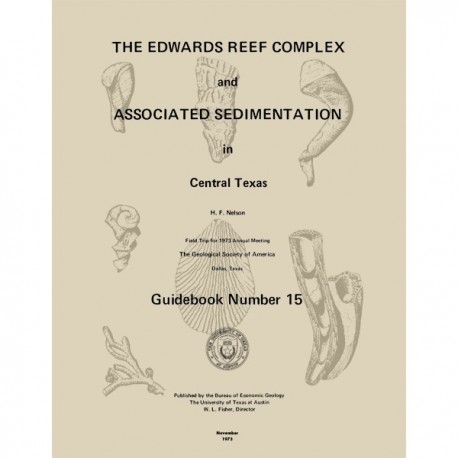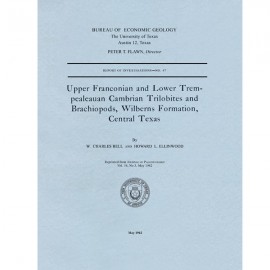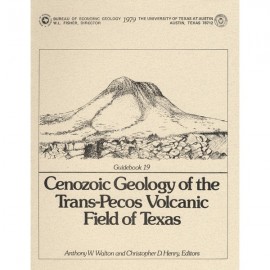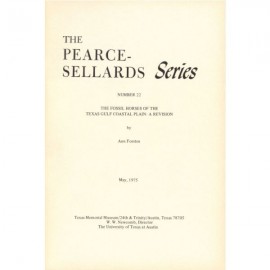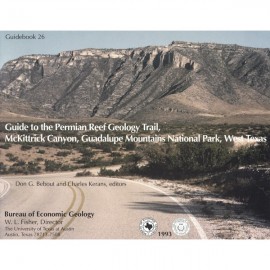Guidebooks
-
Books & Reports
- Reports of Investigations
- Guidebooks
- Udden Series
- Geological Circulars
- Down To Earth
- Atlases of Major Oil and Gas Reservoirs
- Texas Memorial Museum Publications
- Environmental Geologic Atlas of the Texas Coastal Zone
- Mineral Resource Circulars
- Other Reports
- Seminars and Workshops
- Handbooks
- Submerged Lands of Texas
- Symposia
- Annual Reports
- Open File Reports
-
Maps & Cross Sections
- Thematic Maps
- Miscellaneous Maps, Charts & Sections
- Geologic Atlas of Texas
- STATEMAP Project Maps
- Geologic Quadrangle Maps
- Cross Sections
- Highway Geology Map
- Energy and Mineral Resource Maps
- Shoreline Change and Other Posters
- Wilcox Group, East Texas, Geological / Hydrological Folios
- Bouguer Gravity Atlas of Texas
- River Basin Regional Studies
- Featured Maps
- Posters
- Teachers & the Public
-
Geological Society Publications
- Gulf Coast Association of Geological Societies
- Alabama Geological Society
- Austin Geological Society
- Corpus Christi Geological Society
- Houston Geological Society
- Lafayette Geological Society
- Mississippi Geological Society
- New Orleans Geological Society
- South Texas Geological Society
- GCS SEPM Publications
- Historic BEG & UT Series
The Edwards Reef Complex and Associated Sedimentation in Central Texas
GB0015
The Edwards Reef Complex and Associated Sedimentation in Central Texas, by H. F. Nelson. 34 p., 5 figs., 7 plates, 1973. ISSN: 0363-4132. Print
A free, digital version of this publication can be found on: Texas ScholarWorks
"The Fredericksburg Group is one of three groups of rocks which comprise the outcropping Lower Cretaceous sediments in north central Texas. Four formations form this group; from the base upward these are the Paluxy, Walnut, Comanche Peak and Edwards (fig. 1). The Paluxy is made up of terrigenous clastics-red and gray sandstone plus some shale and conglomerate-that were deposited in subaerial and shallow nearshore marine environments. The Walnut consists of nodular chalk and microgranular limestone (micrite), marl, and pelecypod shell beds. The Comanche Peak is a massively bedded, compressed nodular, slightly argillaceous micrite. Both of these formations were deposited on a shallow marine backreef shelf. The Edwards Formation, the primary subject of this field trip, is made up of many types of both primary and diagenetic limestones, dolomite, chert, and evaporites that were formed in both normal marine and hypersaline environments. Sediments deposited in the latter environment were subsequently altered to a considerable extent by secondary processes. Numerous studies have demonstrated that each of these formations grades both upward and laterally to the south into the formation immediately above. In southern Oklahoma the Paluxy (or sandstones having other names) forms a major part of the Fredericksburg Group. In north central Texas the Walnut and Comanche Peak make up the major thickness of the group. In central Texas the Edwards forms almost the entire Fredericksburg section. Deep in the subsurface, the Edwards forms the entire Fredericksburg Group and, in places, is lithologically indistinguishable from the underlying Trinity and overlying Washita sediments.
Outcrops in north central Texas are ideally located to demonstrate the regional facies changes from the subaerial and nearshore sites of deposition, across the shallow marine backreef shelf, through the reef complex, and into the restricted lagoon. However, because time does not permit a study of this complete transition, the field trip concentrates upon the features of the reef complex and its transition into the adjoining backreef sediments and restricted lagoon deposits that have been extensively altered. Six localities (fig. 2) have been chosen to show the major physical features of this part of the Fredericksburg Group. The trip begins in the north end of the area where the Edwards reef complex overlies the backreef sediments (Stops 1 and 2). It then proceeds to a locality (Stop 3) where the upper part of the reef facies and its onlap by interreef sediments can be seen. The last three localities show the physical features formed by diagenesis. In this discussion, localities are referred to by their originally assigned numbers (Nelson, 1959) and by local names for those localities which were not included in the previous study.
Citation:
Nelson, H. F., 1973, The Edwards Reef Complex and Associated Sedimentation in Central Texas, The University of Texas at Austin, Bureau of Economic Geology, Guidebook 15, 34 p.
